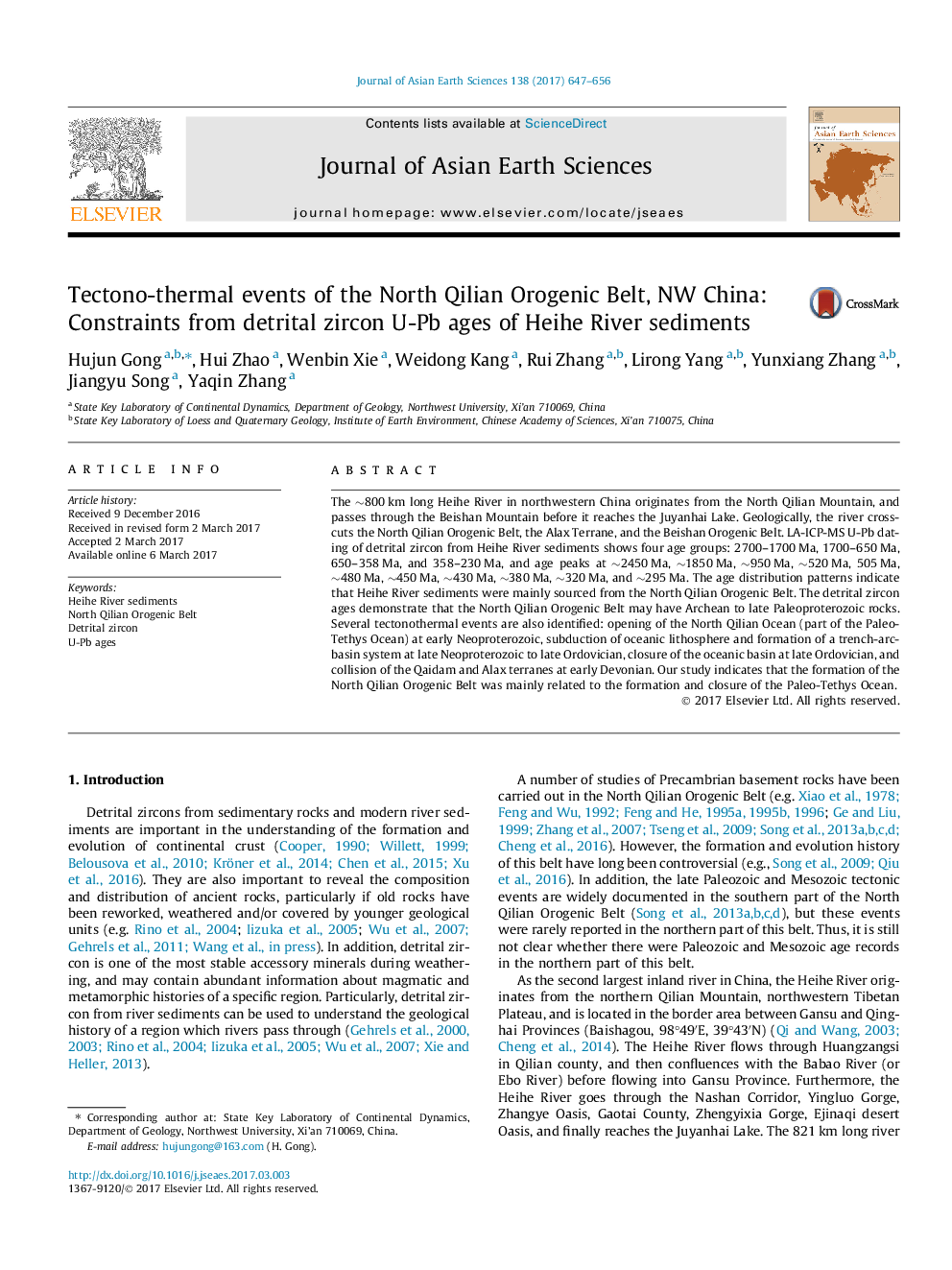| Article ID | Journal | Published Year | Pages | File Type |
|---|---|---|---|---|
| 5786078 | Journal of Asian Earth Sciences | 2017 | 10 Pages |
â¢More than 1000 U-Pb ages of detrital zircon grains from Heihe River sediments are presented.â¢Detrital zircon grains from Heihe River sediments were mainly sourced from the North Qilian Orogenic Belt.â¢The formation of the North Qilian Orogenic Belt was related to the evolution of the Paleo-Tethys Ocean.
The â¼800Â km long Heihe River in northwestern China originates from the North Qilian Mountain, and passes through the Beishan Mountain before it reaches the Juyanhai Lake. Geologically, the river crosscuts the North Qilian Orogenic Belt, the Alax Terrane, and the Beishan Orogenic Belt. LA-ICP-MS U-Pb dating of detrital zircon from Heihe River sediments shows four age groups: 2700-1700Â Ma, 1700-650Â Ma, 650-358Â Ma, and 358-230Â Ma, and age peaks at â¼2450Â Ma, â¼1850Â Ma, â¼950Â Ma, â¼520Â Ma, 505Â Ma, â¼480Â Ma, â¼450Â Ma, â¼430Â Ma, â¼380Â Ma, â¼320Â Ma, and â¼295Â Ma. The age distribution patterns indicate that Heihe River sediments were mainly sourced from the North Qilian Orogenic Belt. The detrital zircon ages demonstrate that the North Qilian Orogenic Belt may have Archean to late Paleoproterozoic rocks. Several tectonothermal events are also identified: opening of the North Qilian Ocean (part of the Paleo-Tethys Ocean) at early Neoproterozoic, subduction of oceanic lithosphere and formation of a trench-arc-basin system at late Neoproterozoic to late Ordovician, closure of the oceanic basin at late Ordovician, and collision of the Qaidam and Alax terranes at early Devonian. Our study indicates that the formation of the North Qilian Orogenic Belt was mainly related to the formation and closure of the Paleo-Tethys Ocean.
Graphical abstractDownload high-res image (233KB)Download full-size image
